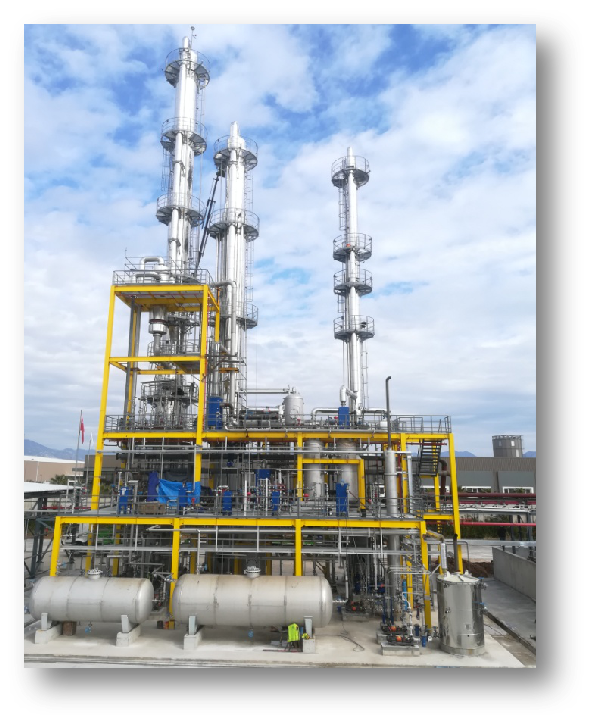- technical background
In 2008, the world’s production capacity of ethyl acetate was only 3 million tons. In recent years, many new or expanded ethyl acetate plants have been completed and put into operation around the world, resulting in greater development of production capacity.
Among the newly added production capacities, except for the 100,000 tons/year unit of Saudi Arabian International Petrochemical Company (Sipchem) in Jubail in 2013, the rest are concentrated in mainland China. As of the end of December 2013, the total production capacity of ethyl acetate in the world reached approximately 5.80 million tons, and the average annual growth rate of production capacity from 2008 to 2013 reached approximately 14.1%.
Among them, the production capacity of North America is 238,000 tons/year, accounting for approximately 4.10% of the world’s total ethyl acetate production capacity; the production capacity of Central and South America is 180,000 tons/year, accounting for approximately 3.10% of the total production capacity; Western Europe The production capacity is 392,000 tons/year, accounting for approximately 0.76% of the total production capacity; the production capacity of Central and Eastern Europe is 98,000 tons, accounting for approximately 1.69% of the total production capacity; the production capacity of the Middle East is 100,000 tons, accounting for approximately 1.72% of the total production capacity; the production capacity in Asia is 4.737 million tons, accounting for approximately 81.67% of the world’s total production capacity; the production capacity of other countries and regions in the world is 55,000 tons, accounting for approximately 0.96% of the total production capacity.
Mainland China is the world’s largest producing country, with a production capacity of 3.53 million tons, accounting for approximately 60.86% of the total production capacity; followed by India with a production capacity of 530,000 tons, accounting for approximately 9.14% of the total production capacity.
- Process introduction
After acetic acid and ethanol are prepared according to a certain proportion, they are pumped into the preheater to preheat, and then measured by a flow meter before entering the azeotrope tower kettle. The temperature rises and reacts to generate crude ester. The crude ester is fractionated through the azeotropic tower, and the gas phase at the top of the tower is After cooling and stratification by the azeotrope tower layerer, part of the upper oil phase is refluxed and part goes to the finished product tower; the lower water phase goes to the recovery tower for treatment.
The finished product tower rectifies crude ethyl acetate. The top of the tower contains trace light components, which are regularly discharged to the waste liquid underground collection tank. The tower contains a mixture of unreacted ethanol, ethyl acetate and water, which enters the finished product tower. layer device, the upper oil phase is completely refluxed, and the lower water phase is sent to the recovery tower for treatment; the qualified ethyl acetate finished product in the tower kettle is sent to the finished product storage tank in the tank area after secondary cooling.
The recovery tower mainly treats the wastewater from the azeotropic tower and the finished product tower. After distillation, the light components at the top of the tower go to the light component storage tank in the tank area, and the oil phase goes to the first tower for treatment; the qualified wastewater from the tower still is sent to the storage tank outside the boundary area. It is up to the customer to decide the treatment plan. A small amount is used as process water for the two stratifiers of this device, and the rest is recommended to be used as cleaning water in the factory, process water for the ethanol device, etc.
- Technical features
(1) Advanced technology, mature technology, low consumption, and strong product market competitiveness;
(2) The various main raw materials required for the process route should be simple and easy to obtain;
(3) The various main raw materials required for the process route should be simple and easy to obtain;
(4) The process route does not cause major environmental pollution;
(5) The process route is relatively simple, saving investment.
- Typical project: 150TPD ethyl acetate refining device

For more detailed ethyl acetate technical information, please contact us. Hubei Sanli Liquidambar Technology Co., Ltd. specializes in providing complete sets of chemical technologies.



